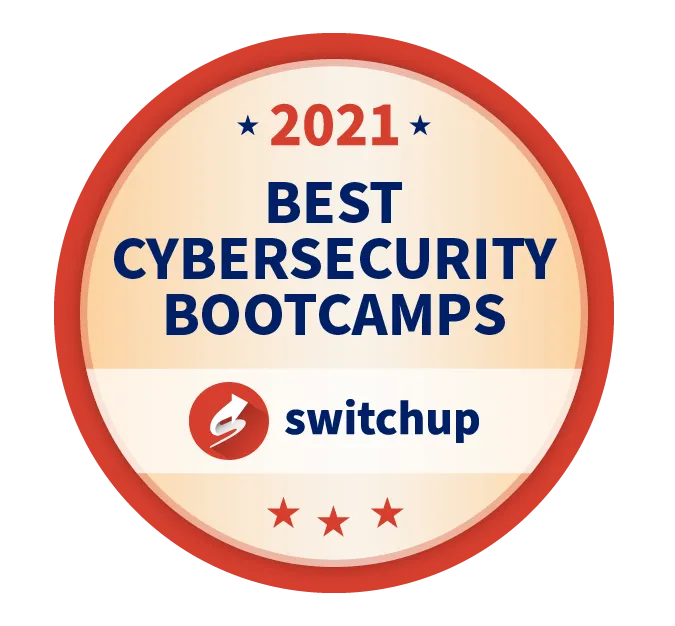
Start Your
Cybersecurity career
with a Job Offer Guarantee
- Live online, part-time, instructor-led classes
- Job offer guarantee within six months of graduation
- 93% hiring rate for job-seeking students
- Practical job-focused cybersecurity skills
- No prior technical background or experience needed to enroll
- CompTIA Security+ voucher included for certification preparation
.svg)
About ESCP Certification
Cybersecurity Bootcamp
Course Length
Part-Time
Alternate Saturdays (10am-3pm CST)
CPEs
Tuition
Learning Experience
Job Offer Guarantee
Check out what graduates are saying about us online
Cybersecurity Bootcamp Payment options
Pay Less Per Month
Apply for an educational loan through Climb, Ascent, or Meritize for low monthly payments over an extended period.
*The monthly payment amount varies based on loan terms. A $160 monthly payment assumes an interest-only payment while in the bootcamp, a 60-month term, and a 13% interest rate.
Pay in Installments
Pay $6,975 before the bootcamp and $6,975 in week 10 of bootcamp.
Pay Upfront
Get $500 off your tuition when you make a one-time, upfront payment.

Companies That Hire Our Graduates






.svg)





















job titles before our students transitioned into cybersecurity

job titles of our graduates

the experience
Holistic Approach
Evolve Security Academy Certified
Lab Simulations / Tools
Student Teamwork
Gain Real Work Experience
Group Competency Assessments
Adjunct Instructors
Security+ Voucher
Job Preparation

Awards & Recognitions
At Evolve Academy, we take pride in our commitment to excellence and the recognition we've received from prestigious organizations in the industry. We're honored to have been awarded for seven consecutive years, three times by Course Report and five times by SwitchUp. These awards serve as a testament to our dedication to providing comprehensive cybersecurity training that equips our students with the skills and knowledge necessary to excel in their careers.









curriculum
Introduction to Cybersecurity
.svg)
Networking
.svg)
Security Program
.svg)
OSINT & Social Engineering
.svg)
Threat Intelligence
.svg)
Scripting for Security
.svg)
Security Operations Architecture
.svg)
Security Operations Detection
.svg)
Cryptography
.svg)
AppSec & Offensive Security
.svg)
Threat Hunting & Incident Response
.svg)
Security Apprenticeship
Job Preparation
.svg)







